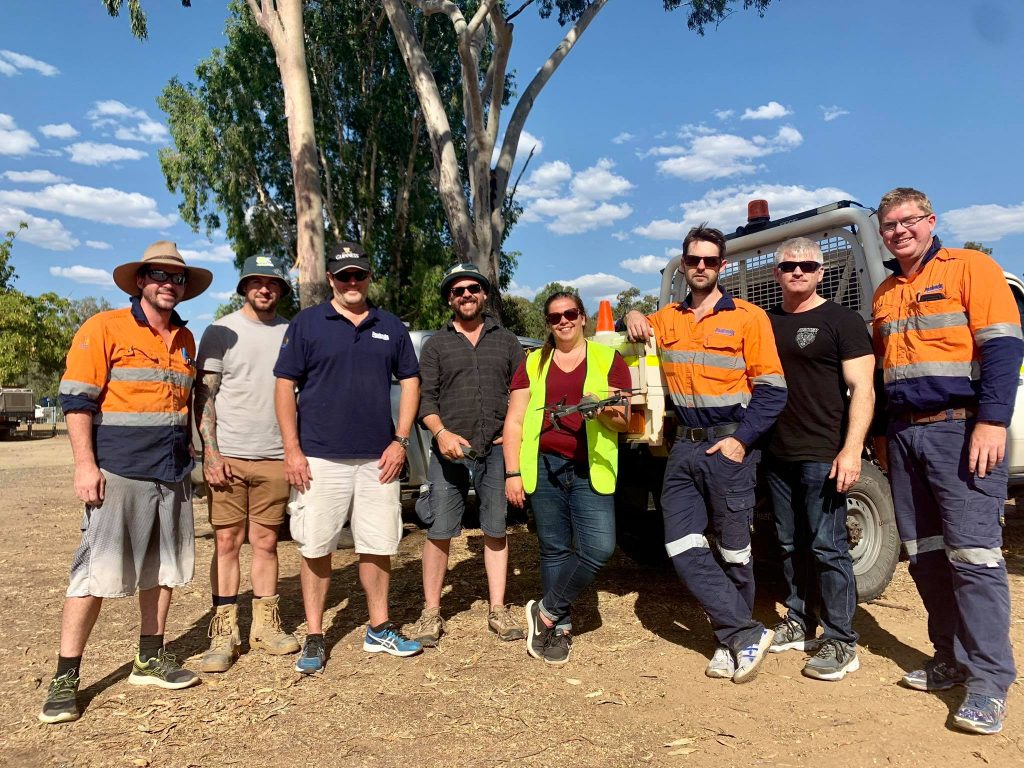Unmanned aerial vehicles (UAVs), Remote Piloted Aircraft Systems (RPAS), or what are more simply known as ‘drones’, are a tool that is proving revolutionary for many industries. For example, in the field of surveying, one football field that would take two hours to map via conventional ground based systems, can be mapped in just under 10 minutes with a drone. Most importantly, the final map is just as accurate. In television and the film industry, aerial footage by drones costs a fraction of that of helicopters, and are now widely used in all forms of visual production. For search and rescue, drones are increasingly being employed. On some of the popular beaches in Australia, drones are being used to direct surf life savers to swimmers in trouble, and flotation buoys can be dropped to the swimmer in distress well before the life saver reaches them, reducing the likelihood of drowning. In China, drones equipped with flame throwers are being used to burn weeds off power lines. Drones are more and more being used for engineering purposes, from examining construction works to inspecting power lines. Following the Fukushima nuclear disaster in Japan, Yamaha R-Max drones were used to measure radiation levels. In recent years, Amazon has been exploring (and testing) the use of delivery drones.
In agriculture, drones are being employed to assess crop health and to apply insecticides for the control of pests. Plus drones can be used in tandem, in fact many can be flown at the one time so that large areas can be treated. They talk to each other using ‘swarm’ technology and the accuracy of insecticide application is now down to a few millimetres. This means that there is a more targeted and precise application of product, meaning less wastage and reduced costs, and a concomitant lessening of potential non-target impacts. This is of course the hallmark of integrated pest management.
Plus the drones are so much easier to use today. Now it is just a matter of mapping the flight path on a smart device, uploading the path to the drone, the drone launches, completes the mission (e.g. spray application), and then returns back to the starting location. Plus the flight path only needs to be mapped once and saved for evermore and the drone can autonomously undertake the mission, with little intervention by the user.
Even in the field of urban pest control, drones are increasingly being deployed. They are being used for fogging operations in both the field and in warehouses to control a range of public health and stored product pests. For mosquito management, drones can be employed to map habitats and to deliver insecticide to larval breeding areas. Drones are even being used to scare birds away from sensitive areas.
The drones of today are much safer to use; they have multiple avoidance sensors to prevent running into objects and people. They have GPS and ‘geofencing’ incorporated into the firmware so that they cannot be flown into restricted areas such as airports.
To give you an idea of how popular drones have become in recent years, we only have to look at the success of the most famous drone company in the world, Dà-Jiāng Innovations, more commonly known by their initials, DJI. This Hong Kong based company began their operation in 2006 by its founder, Frank Wang. He set up the business in his dormitory room at Hong Kong University of Science and Technology, which he was attending at the time. Now in 2019, DJI has an annual revenue of almost USD$3billion and a huge 70% share of the global drone market.
Laws relating to drones vary around the world and it is important to understand these if you are thinking of using such devices. In some countries, you will be arrested if caught flying a drone without the appropriate permissions. Generally the more restrictive the government is, the less likely you will be allowed to freely use a drone. In some nations, drones have to be registered (e.g. the US and soon in Australia), although this will depend on the size of the drone. For example, in the US, drones of over 250g must be registered (which is why DJI brought out the Mavic Mini, which weighs 249g!). For the most part, the registration process is not too arduous, requires that a basic knowledge test is passed, and only costs a few dollars.










